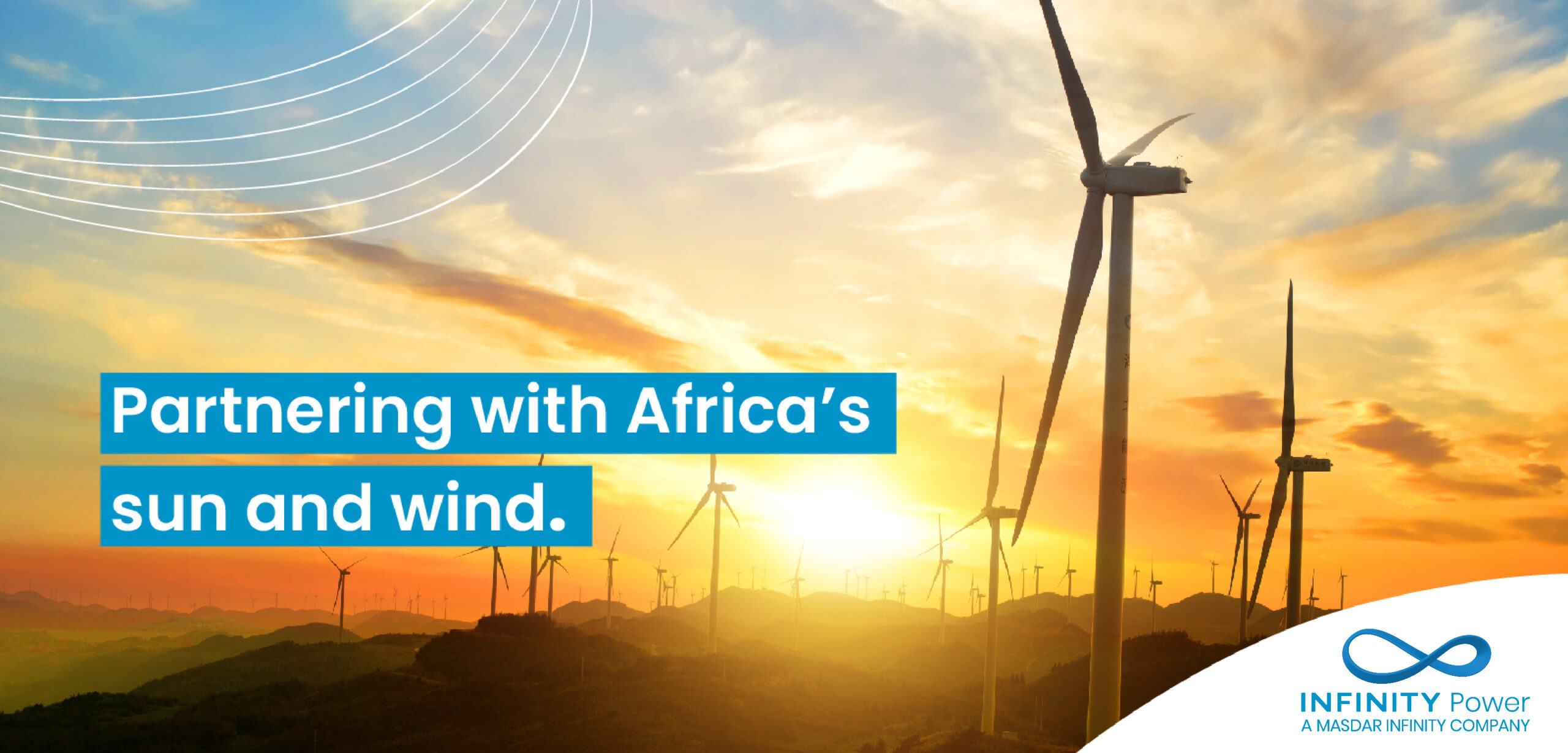- KSA’s Sipchem lands approval for blue ammonia project. (Ammonia)
- PIF-backed US automaker Lucid opens up its first international EV plant in KSA. (Electric Vehicles)
- Egypt secures USD 400 mn China Exim loan for its electric light rail train. (Debt Watch)
- Did Egypt finish drafting its national hydrogen strategy? (What We’re Tracking Today)
- Qatar and South Korea are partnering on renewables and clean hydrogen. (Climate Diplomacy)
- The IFC has been spending more on MENA renewable projects. (What We’re Tracking Today)
- India’s REC is financing USD 6 bn-worth of green hydrogen projects. (Around the World)
- Heat trapped underground from growing urban infrastructure could cause major cities to “sink.” (Climate in the News)

Thursday, 28 September 2023
Sipchem lands approvals for its blue ammonia project
TL;DR
WHAT WE’RE TRACKING TODAY
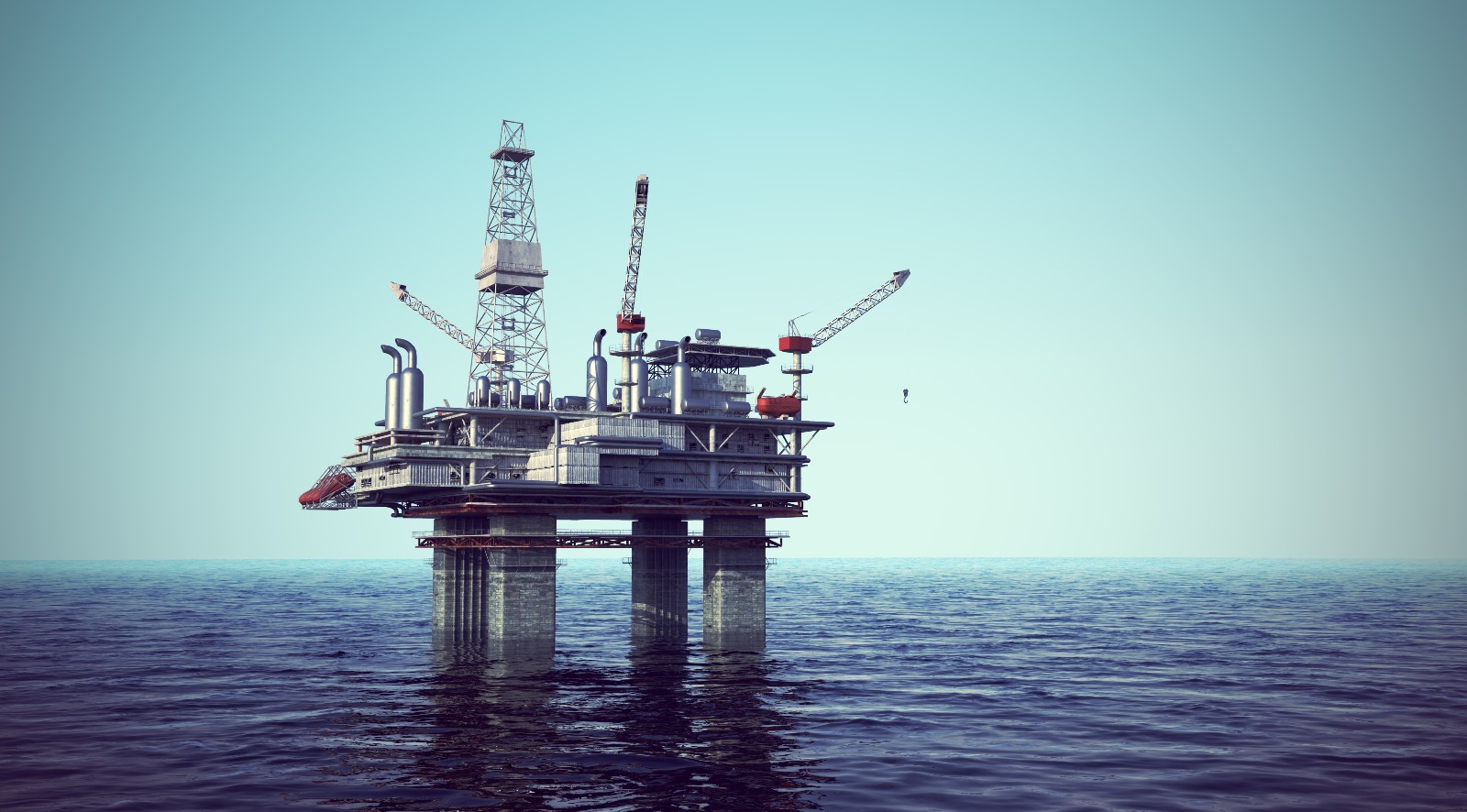
Good morning, friends. We have a tight but interesting issue to close out the week, with hydrogen and ammonia getting a lot of traction in our region and beyond.
THE BIG CLIMATE STORIES- Sahara International Company (Sipchem) — a petrochemical company jointly owned by private sector investors — said it has received approval from Saudi Arabia Energy Ministry to allocate feedstock to build a blue ammonia plant in Jubail Industrial City. Also, EV maker Lucid Group — which is backed by Saudi Arabia’s Public Investment Fund — inaugurated its first overseas production facility in Jeddah.
THE BIG CLIMATE STORY OUTSIDE THE REGION- Britain greenlights delayed Rosebank oil field in spite of climate concerns: The UK government has signed off on the country’s largest untapped oil drilling project off Shetland, the USD 9.4 bn Big North Sea Oil field, after UK Prime Minister Rishi Sunak watered down the country’s original 2050 net-zero target last week. Development rights of the Rosebank in the North Sea oil field — which is expected to have a 500k barrel volume over its lifecycle — were granted to Norway’s Equinor and British firm Ithaca Energy. The project would generate CO2 emissions equivalent to 56 coal-fired power stations for a year, sparking concern from environmental groups and the country’s Green Party.
The story grabbed headlines in the foreign press yesterday: Reuters | The Guardian | The New York Times | CNN | Washington Post | Bloomberg | Financial Times | France 24 | The Wall Street Journal
OVER IN COPLAND-
Al Jaber is making the rounds with pre-COP diplomacy and lobbying: COP President-Designate Sultan Al Jaber called for a “robust response” to the Global Stocktake Report announced earlier this month during a visit to China this week, where he attended talks on climate action, Wam reports. Al Jaber also put out feelers in Tokyo, signing a joint declaration of intent (JDI) with the Japanese Industry Ministry to up bilateral cooperation on the energy transition the same week.
ALSO- Al Jaber discussed with Chinese top steel firm Baowu’s Vice President Hou Angui the climate summit’s priorities on the decarbonization of heavy-emitting sectors and the company’s decarbonization efforts. (Tweet)
A shared green hydrogen strategy between the UAE + the Netherlands? Early stage plans to solidify a green hydrogen supply chain from Abu Dhabi to Europe are on the cards, after a visit by the Dutch Prime Minister Mark Rutte to Abu Dhabi, Wam reports. This would build on the Masdar-Netherlands partnership made back in January to boost the green fuel export — and the more recent India-Middle East-Europe trade corridor proposed at the G20 summit this month.
Going Dutch: Rutte and UAE President Sheikh Mohamed bin Zayed Al Nahyan also discussed co-operation in industries such as space, AI, agri-tech and smart mobility, and signed an agreement on water management, though it was unclear what this would entail.
SOUNDBITE OF THE WEEK– Morocco is hitting a “sweet spot” for Chinese battery makers looking to serve markets in the US and Europe, Chinese battery giant CNGR Europe Chief Executive Thorsten Lahrs told the Financial Times on Wednesday. He said battery plants would be built at a quicker phase in Morocco than in target countries that had lengthy processes for permits. Lahrs also said that Rabat is a less risky investment potential given that Chinese producers can move towards exporting to other countries if the US or Europe put in place new protectionist policies. Obtaining environmental permits in Europe would take “several years,” while in Morocco “we may have ground breaking already next month,” he said. His statements come a week after Morocco-based pan-African investment fund Al Mada said it is partnering up with Chinese battery giant CNGR Advanced Material Company to build a MAD 20 bn (USD 2 bn) industrial base for battery parts production and recycling in the North African country.
DATA POINT- The IFC has been spending more on MENA renewable projects: The International Finance Corporation (IFC) announced it has invested USD 1 bn in the Middle East in its 2022-23 fiscal year, including USD 185 mn in climate-related projects, in a statement. The climate investments “have made a great leap compared to the previous fiscal year,” the lender said. IFC invested in Jordan's first green bond, which will be issued by Jordan Kuwait Bank. IFC also facilitated investments in the UAE’s Masdar to build Uzbekistan's first wind farm. In Egypt, IFC and other international partners invested USD 1.1 bn in AMEA Power to construct solar and wind farms.
WATCH THIS SPACE #1- EU adding mining minerals needed for energy transition to its green taxonomy: The EU will include the mining of critical raw materials needed for green tech manufacturing to its green investment rulebook — called the EU Taxonomy of Sustainable Activities — as a “priority” activity, Bloomberg reported, citing statements by the bloc’s financial services commissioner Mairead McGuinness during a media roundtable in Brussels. The move comes as the bloc aims to secure domestic mining of critical raw materials to cover at least 10% of its needs by the end of the decade. McGuinness did not disclose when the commission will submit the proposal for incorporating mining in the rulebook, or mention details on what kind of criteria would be used. The EU taxonomy is a rulebook for investors aimed at channeling EUR bns toward investments in renewable energy and green tech assets.
Controversy expected: Climate experts and activists have warned that the demand for critical minerals needed for the energy transition such as lithium — predicted to to rise over 40 times by 2040 — is not sustainable and will cause “needless water shortages, Indigenous land grabs, and ecosystem destruction,” The Guardian reported earlier this year, citing a US study. Bloomberg expects that the addition of the mining industry onto the list of economic activities that contribute toward the bloc’s goal of climate neutrality will spark controversy among climate activists who have previously rejected the inclusion of heavily polluting industries such as gas, nuclear power, and aviation. Last year, Austria filed a suit to reverse the EU Commission’s decision to label gas and nuclear energy as green energy sources, and was followed by Greenpeace and a coalition of NGOs and campaign groups including the World Wildlife Fund and ClientEarth a few months later.
What’s the solution? Ambitious policies investing in mass transit, walkable towns and cities, and robust battery recycling in the US would slash the amount of extra lithium required in 2050 by more than 90%, the US-based study cited by the Guardian found.
WATCH THIS SPACE #2- Did Egypt finish drafting its national hydrogen strategy? Egypt has completed drafting its national hydrogen strategy, which is currently under review by the country’s Supreme Council of Energy, Electricity and Renewable Energy Minister Mohamed Shaker said at the International Energy Interconnection Conference held in Beijing, according to the State Information Service. The strategy is expected to include a governance structure in line with the best global practices to help lure in more investments in Egypt’s green hydrogen sector. Egypt is targeting 8% of the global hydrogen market by 2040 and it allocated 26.5k sq km of land to renewable projects with a capacity of 128 GW from solar and wind.
WATCH THIS SPACE #3- Morocco unveils a new land allocation strategy for its green hydrogen plans: The Moroccan government is reportedly looking to allocate some 1.5 mn acres of land (6k sq km) for the development of green hydrogen under plans to become a green fuels export hub, Barron writes. Morocco wants to position itself as an export hub for renewable energy and green hydrogen to Europe: Back in February, Spain extended a EUR 800 mn credit line to the kingdom and signed 19 MoUs including a renewable energy development agreement with the country.
Other nations have also been showing interest in the country’s potential, with Germany signing with Morocco a partnership agreement in 2020 to build a 100 MW hydrogen plant in the country. Morocco and Portugal also signed an agreement to also develop green hydrogen plants in the country with plans to export the green fuels to the EU. Moroccan state-owned fertilizer and phosphate giant OCP Group announced plans back in June to invest USD 7 bn in an ammonia plant derived from renewables-powered green hydrogen that will initially have an annual capacity of 200k tons of ammonia, with plans to later up the capacity fivefold to reach 1 mn tons by 2027, and increase that even further to reach 3 mn tons over the next decade.
WATCH THIS SPACE #4- Saudi Arabia's Asir region is sitting atop SAR 281 bn (USD 64 bn) in mineral resources which are expected to contribute USD 75 bn to its GDP, reports Arabian Business. The minerals in Asir, spreading over an area of 81k sq km, contain 34 kinds of minerals, with an estimated value of USD 21 bn in zinc, USD 20 bn in gold, USD 16.2 bn, and USD 6 bn in silver. Metals and the mining sector are essential in Saudi’s 2030 vision to achieve sustainability as the sector is expected to become the kingdom's 3rd pillar of industry.
KUDOS-
Dubai Islamic Bank (DIB) launched its One Tree for Everyone initiative through which it will plant one tree for every new customer who opens a DIB account. The initiative comes as part of the bank's plan to play a leading role in the environmental, social, and corporate governance (ESG) space and foster a community of environmentally-conscious individuals.
|
***
YOU’RE READING ENTERPRISE CLIMATE, the essential regional publication for senior execs who care about the world’s most important industry. Enterprise Climate covers everything from finance and tech to regulation, products and policy across the Middle East and North Africa. In a nod to the growing geographical ambitions of companies in our corner of the world, we also include an overview of the big trends and data points in nearby countries, including Africa and southern Europe.
Enterprise Climate is published by 5am CLT / 5am Riyadh / 6am UAE Monday through Thursday by Enterprise, the folks who bring you Enterprise Egypt, your essential 6am and 3pm read on business, finance, policy and economy in Egypt and emerging markets.
EXPLORE MORE OF ENTERPRISE ON THE WEB — tap or click here to read EnterpriseAM, EnterprisePM, and The Weekend Edition on our powerful new website packed with reader-friendly features.
Subscribe to Enterprise Climate here or reach out to us on climate@enterprisemea.com with comments, suggestions and story tips.
***
CIRCLE YOUR CALENDAR-
Egypt, Ethiopia, and Sudan will meet in Cairo for a third round of talks on the Grand Ethiopian Renaissance Dam (GERD) in the second half of October, Egypt’s Irrigation Ministry spokesperson said earlier this week (watch, runtime: 3:10). This comes after the latest round of talks between the three countries failed to break the deadlock over ending the years-long dispute.
Check out our full calendar on the web for a comprehensive listing of upcoming news events, national holidays and news triggers.
AMMONIA
KSA’s Sipchem lands approval for blue ammonia project
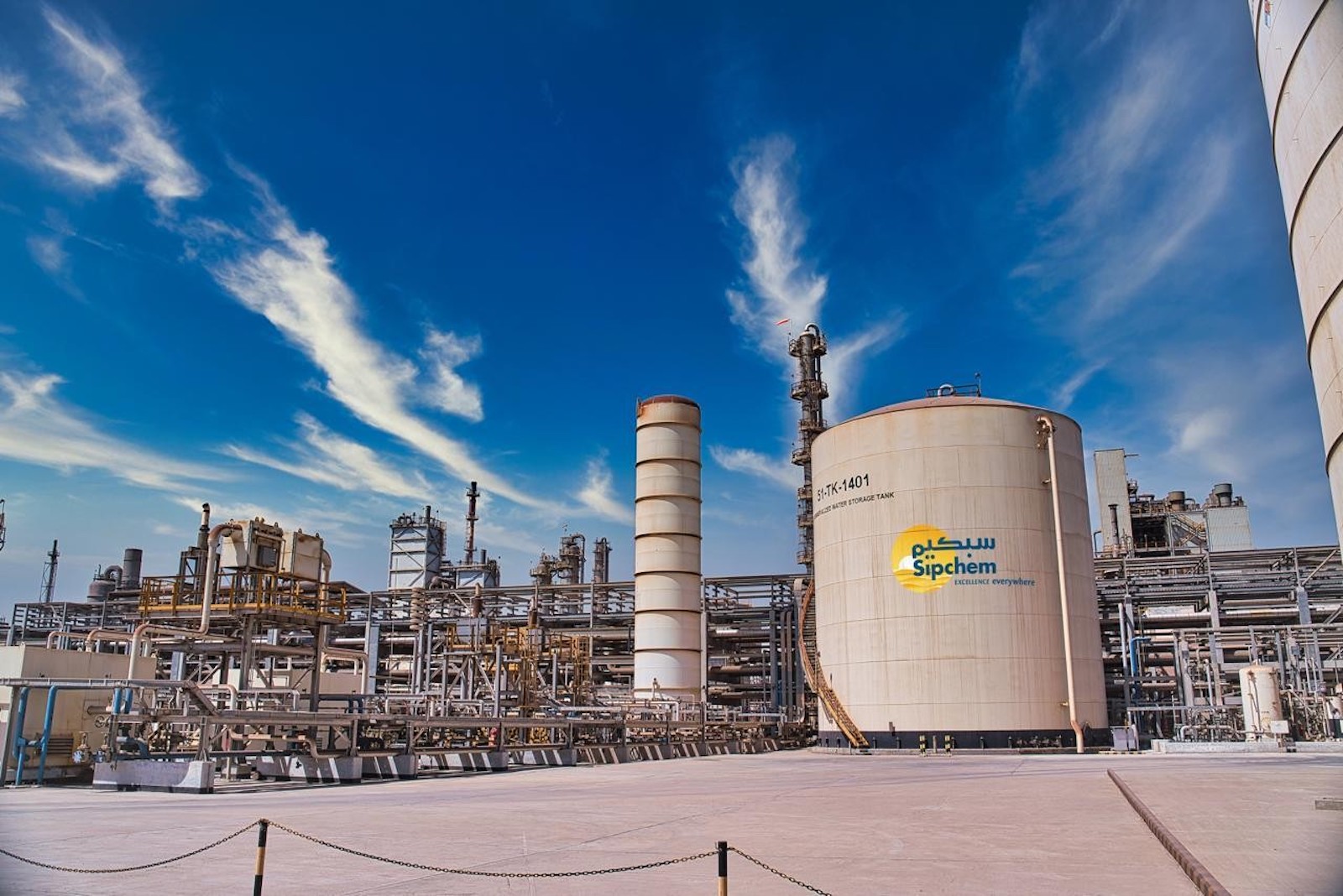
KSA’s Sipchem seals approval for blue ammonia project: Sahara International Company (Sipchem) — a petrochemical company jointly owned by private sector investors — said it has received approval from Saudi Arabia Energy Ministry to allocate feedstock to build a blue ammonia plant in Jubail Industrial City, Sipchem said in a disclosure to Tadawul yesterday.
About the plant: The low-carbon blue ammonia facility will have a capacity of 1.2 mn tons per year, the disclosure read, without providing details on funding or a timeline for completion. The company said it will “utilize the most efficient energy and feedstock technologies for the plant.”
About Sipchem: Established in 1999, the petrochemical company offers methanol, butanediol, tetrahydrofuran, acetic acid, acetic anhydride, vinyl acetate monomer, and carbon monoxide through its various affiliates, according to its LinkedIn. It launched a number of downstream projects in recent years to manufacture ethylene vinyl acetate, low density polyethylene, ethyl acetate and other chemicals.
REMEMBER- All under a race for blue ammonia: Several Saudi players have been tapping the low-carbon ammonia markets in recent months. Saudi chemical manufacturer Sabic Agri-Nutrients shipped in June its first 5k metric ton load of low-carbon ammonia to Taiwan. The shipment in June followed another 5k ton load of low-carbon ammonia to India in May, an undisclosed quantity to Japan in April, and 25k tons of low-carbon blue ammonia to South Korea last November. Another Saudi firm, Ma’aden, signed an agreement with Indian agricultural chemicals maker Coromandel International in May to supply low-carbon blue ammonia. The agreement came after it made shipments of low-carbon blue ammonia to Chinese petrochemical producer Shenghong Petrochemicals as part of an agreement to supply 25k tons of blue ammonia.
ELECTRIC VEHICLES
PIF-backed US automaker Lucid opens up its first international EV plant in KSA
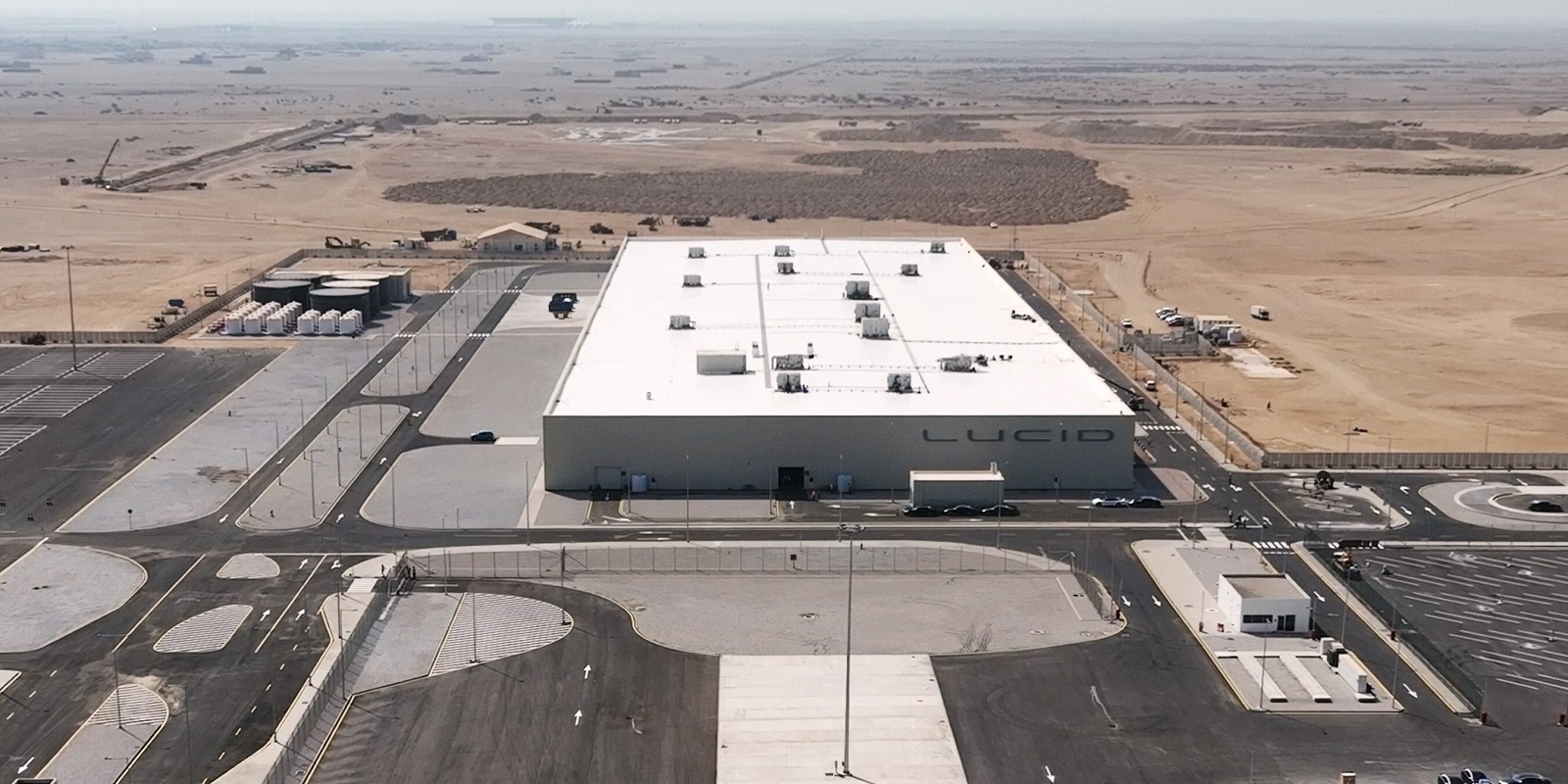
PIF-backed Lucid Group opens up its first international EV plant in KSA: EV maker Lucid Group — which is backed by Saudi Arabia’s Public Investment Fund — inaugurated its first overseas production facility in Jeddah’s King Abdullah Economic City (KAEC) after obtaining the operating license for its manufacturing unit earlier this week, according to a company statement. The Advanced Manufacturing Plant (AMP-2) will contribute to Saudi Arabia’s target of having EVs make up 30%of new car sales in the kingdom by 2030.
Planned production capacity: In the first production phase, the automaker plans to have a 5k EV manufacturing capacity of its flagship Lucid Air cars per annum, for which it recently secured the 2023 World Luxury Car Award. AMP-2 has already kicked off operation on semi-knocked-down kits (SKDs) — vehicles that arrive at a plant with the body already welded and coated or painted, along with nearly all the parts needed for assembly. The company plans to produce 155k EVs yearly in Saudi Arabia once full-fledged production capacity is achieved by 2025. Lucid aims to build a full production plant in the country that could potentially earn the EV manufacturer USD 3.4 bn over 15 years. Construction of the facility began in May 2022.
REMEMBER- PIF is helping Lucid drum up capital to expand its operation in KSA and beyond: Lucid Group plans to raise USD 3 bn through a common stock offering, with most of the funding coming from the PIF, which is Lucid’s majority shareholder. KSA’s sovereign wealth fund said at the time it would snap up some 265.7 mn shares in a private placement for c. USD 1.8 bn. The remaining USD 1.2 bn will be raised from a public offering of 173.5 mn shares of common stock. PIF is also backing KSA’s first car brand Ceer, which is expected to add some USD 8 bn to the country’s coffers by 2034, once its USD 96 mn, 1 mn square meter EV production plant becomes fully operational.
DEBT WATCH
Egypt secures USD 400 mn China Exim loan for its electric light rail train
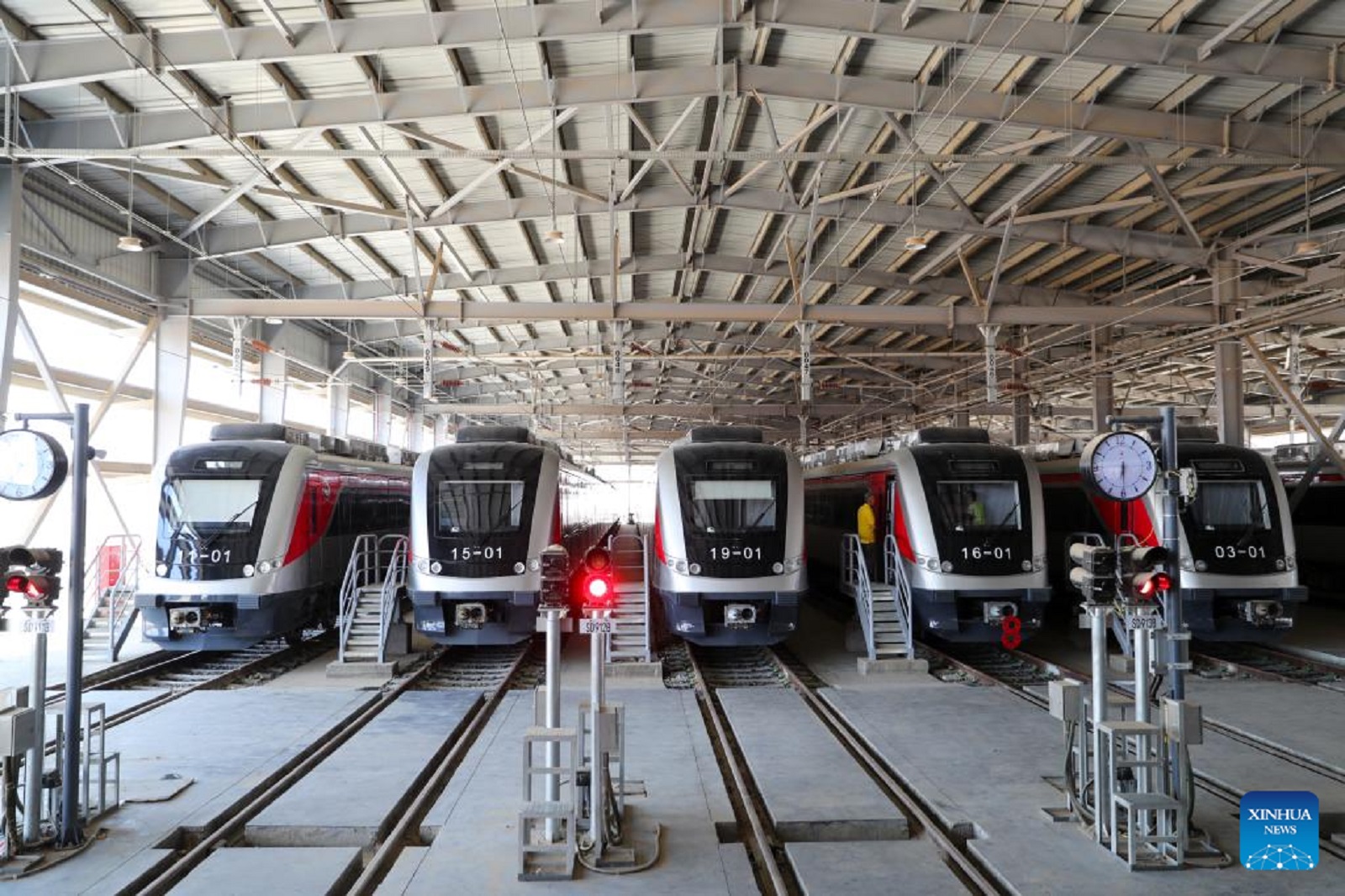
The Export-Import Bank of China (China Exim) is reportedly lending Egypt USD 400 mn to finance its third and final phase of the all-electric light railway train (LRT), Asharq Business reports, citing people it says have knowledge of the matter. The loan would finance the delayed project’s completion, adding 20.4 km and four additional stations to the line. Details on the loan’s tenor are yet to be disclosed.
Supporting expansion: The fresh money will be used to develop various mechanical and electrical systems, including the project’s central control, ticket gates, and other signaling and communications equipment, all of which will be implemented by chinese company AVIC, the project’s main contractor, Asharq quotes a source as saying.
The timeline: Administrative procedures for the loan are underway and are set to be completed before the end of this year, after which the disbursement proposal will be presented to Egypt’s House of Representatives for approval by 2024, the source added.
This is the second Exim bank loan Egypt obtained for the project: The Chinese lender agreed back in 2019 to extend a USD 1.2 bn loan for the LRT’s initial phases of construction. The Chinese funds were used to purchase 22 trains, each consisting of six cars, in addition to installing all the operating systems of the project, which inaugurated its first and second phases in July of last year.
CLIMATE DIPLOMACY
Qatar and South Korea to partner on renewables and clean hydrogen

Qatar and South Korea to partner on renewables and clean hydrogen: Qatar's Minister of State for Energy Affairs Saad Al Kaabi met with South Korea's Industry Minister Bang Moon-kyu yesterday in Seoul to discuss potential development and knowledge transfer agreements in the renewable energy and green hydrogen sectors, according to South Korea’s news agency Yonhap.
REMEMBER- Qatar plans to slash 25% of its greenhouse gas emissions by 2030 compared to 2019 levels, plans to setup the world’s largest blue ammonia plant with ThyssenKrupp and Consolidated Contractors Company which is set to produce 1.2 mn tons ammonia of low-carbon fuels annually once operational by 1Q 2026, and South Korea has set a target to have renewables account for approximately 21.6% of its energy mix by 2030, with plans to later up the capacity to 30.6% of electricity volume by 2036 under plans to become net-zero by 2050. A consortium led by South Korea’s steelmaking company Posco Group was also awarded in June a USD 6.7 bn contract to set up what was described at the time as the world’s largest green hydrogen plant in Oman’s Duqm.
AROUND THE WORLD
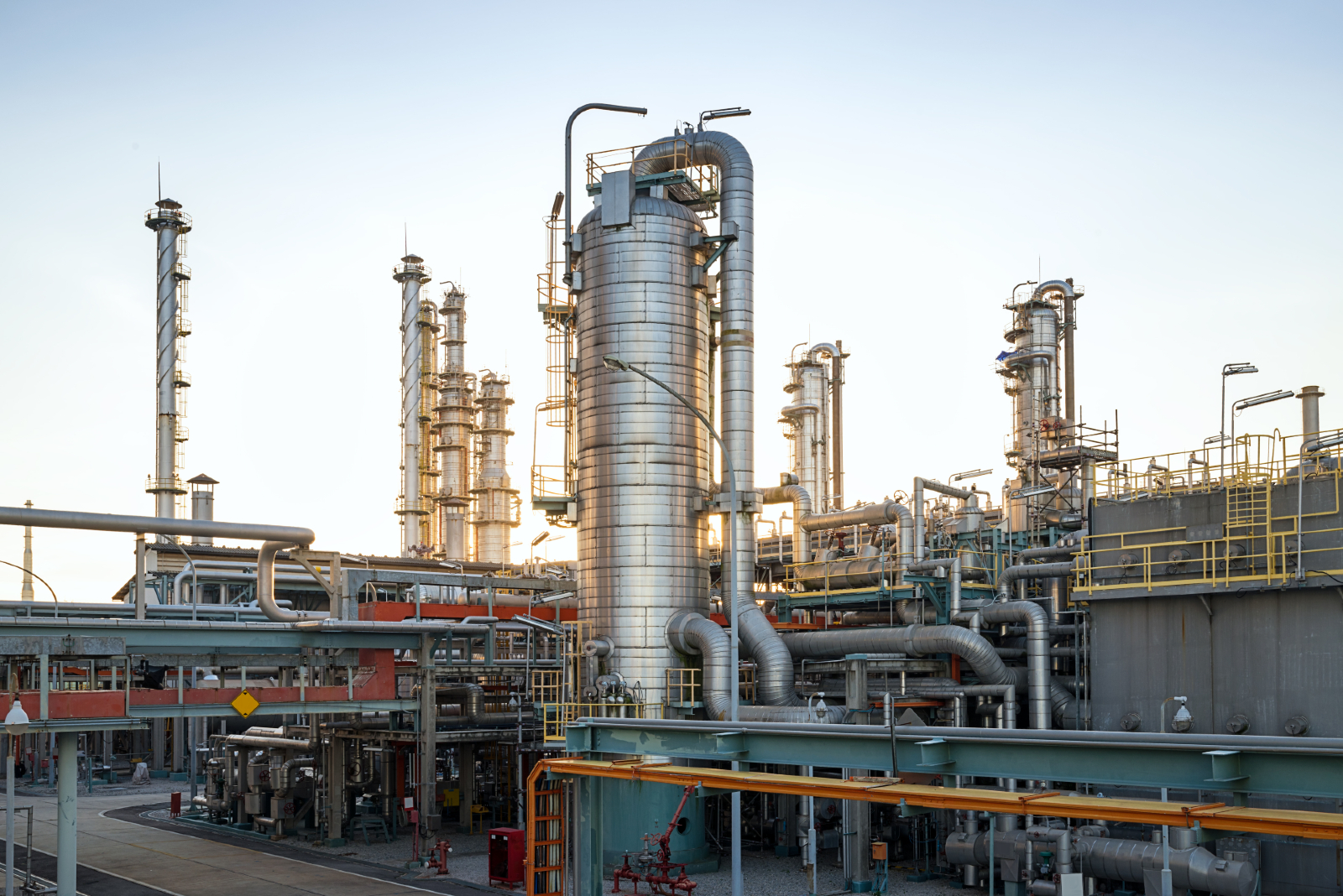
Indian government-owned energy financier REC will funnel USD 6 bn into green hydrogen and ammonia projects, REC Chairman and Managing Director Vivek Kumar Dewangan told Argus. The pledge responds to calls from state oil refiners — which currently rely on fossil fuel-based hydrogen — to encourage and support green H2 projects. Coastal projects for green H2 and ammonia are also eyeing the funding, Dewangen added, amid renewed export ambitions thanks to G20 brainchild India–Middle East–Europe trade corridor.
REMEMBER- India announced its target of producing 5 mn tons of green H2 by 2030 back in 2021. The following year, the government introduced a National Green Hydrogen Mission, setting out policies and a framework that would encourage the production, use and export of the green fuel in the country.
Germany and the UK signed hydrogen energy agreement: Germany and the UK signed an agreement partnering on international trade in hydrogen to support their net zero goals, the UK’s Department for Energy Security and Net Zero said in a statement. The agreement will see both countries accelerate the role of low-carbon hydrogen in their energy production, develop renewable hydrogen tech, and support low-carbon investments. The UK launched a GBP 240 hydrogen fund while Germany will provide aid for around 2.5 GW of electrolysis and allow EUR 700 mn for developing hydrogen production methods.
The European Investment Bank is extending a EUR 1.7 bn financing package to support US-based renewables developer Solaria to develop PV plants in Iberia and Italy, the lender said in a statement. The bank — which has already rubber stamped the first EUR 278 mn green loan of the funding package for development of the first batch of projects yielding over 1 GW — will help finance development of 120 solar farms in Portugal, Spain, and Italy that will collectively have a 5.6 GW generation capacity, and will be operational in 2028. The project is backed by the InvestEU programme, which aims to facilitate more than EUR 372 bn in additional investments between 2021-2027. It will provide clean electricity to approximately 2.5 mn households while offsetting an estimated 3 mn tons of CO2 equivalent annually. The solar production plan is “Solaria’s most ambitious financing operation to date,” and funding for the project will include multiple green loans, in which other multilateral lenders and financial institutions will be allowed to take part.
OTHER STORIES WORTH KNOWING ABOUT THIS MORNING-
- India put its first green hydrogen fuel cell bus on the road in New Delhi earlier this week. The energy density of these buses is triple the amount of conventional buses and are considered the most environmentally friendly. (Wam)
- AIIB to provide USD 4.5 bn for climate projects in Bangladesh: The China-led Asian Infrastructure Investment Bank (AIIB) has pledged a loan of USD 4.5 over the next five years to fund climate projects in Bangladesh. To date, the bank has provided USD 3.27 bn in loans for 18 projects in the South Asian country. (Xinhua)
- Chinese solar panel maker Trina Solar is planning to build its third factory in Vietnam, with an expected investment of USD 400 mn. The plant is set to come online in 2025. (Reuters)
CLIMATE IN THE NEWS

Urban infrastructure could face major damage from increased heat trapped underground: Heat emitted and trapped under the surface from subways and buildings — dubbed “underground climate change” — could cause major cities including Chicago, New York and London to “sink,” CNBC reported, citing a Chicago-based study (pdf) published in Nature. Air temperatures in underground human-made structures can be up to 25 °C higher than “undisturbed” ground temperature, which causes the ground to deform and city structures and infrastructure to crack, author of the study and assistant professor of civil and environmental engineering at Northwestern University Alessandro Rotta Loria said. The impact of the added trapped heat — which is rising faster than climate-driven surface global warming — could cause major displacements and is predicted to negatively impact public health, building structures, and public transportation.
How did they measure the heat? 100 sensors smaller than the size of a credit card have been placed in parking garages, basement boiler rooms, and subway tunnels all around the downtown Loop of Chicago to track what Rotta Loria describes as a “silent hazard.”
What can be done: Underground resilience could be integrated into local administration policies, Transportation Secretary Pete Buttigieg told CNBC, adding that alternative building materials that do not emit as much heat can be explored. The path toward mitigation would be costly, but relatively simple, Rotta Loria said, adding that underground thermal insulation can be built into new structures to mitigate waste heat escaping into the earth. The excess heat could also be captured and used as geothermal energy to warm and cool buildings, with an estimated return on investment in about six years, according to Rotta Loria.
Keeping up with China's EV dominance: China's dominance over the EV market will take a lot of work for the West to beat, Bloomberg reports. As cheap Chinese EVs flood European markets, the EU launched an investigation last month into China's subsidies for electric cars. “The European Commission is recognizing the increasingly asymmetric situation our industry is faced with,” the director general of the European Automobile Manufacturers’ Association Sigrid de Vries told Bloomberg. Europe and the US have been trying to develop their EV industries to reduce reliance on China. The share of Chinese brands of EVs in the EU was 8% last year, according to an EU official who spoke to Bloomberg. With Chinese models about 20% cheaper than domestic offerings, the expectation is that they will control 15% of the market by 2025, the official said.
What gives China such an advantage? The Chinese government has heavily invested in EV production and facilities for battery manufacturing. China now processes more than half the world’s lithium, two-thirds of its cobalt, more than 70% of its graphite, and about one-third of its nickel, according to the International Energy Agency. China's production of rare earth elements used in EV motors accounts for more than 50% of the world's supply. China's EV batteries, the costliest part of EV production, come at USD 127 per KW-hour, while in the US and Europe they are 24%-33% more expensive. A single lithium-iron-phosphate battery factory costs around USD 865 mn in the US or Germany, but only around USD 650 mn in China.
What’s next? The US and Europe are working to incentivize domestic EV production and reduce reliance on China, but they'd need to spend USD 82 bn and USD 98 bn respectively on the battery-metal refining to cell-making facilities they’d need by 2030, the report notes.
CALENDAR
SEPTEMBER 2023
26-27 September (Tuesday-Wednesday): GCC-Iraq Business Forum, Sharjah, UAE.
27-29 September (Wednesday-Friday): Algeria’s International Exhibition for Renewable Energy and the Environment, Algiers, Algeria.
28 September (Thursday): International Energy Agency Critical Minerals and Clean Energy Summit, Paris, France.
Chariot Limited and Total Eren’s feasibility study on a 10 GW green hydrogen plant in Mauritania is to be completed.
Egypt set to launch alliance to shore up climate financing in developing countries.
OCTOBER 2023
2-5 October (Monday-Thursday): ADIPEC Decarbonization Accelerator, Abu Dhabi, UAE.
4 October (Wednesday): Arabia CSR Gala Awarding Ceremony, UAE.
4-5 October (Wednesday-Thursday): Future Sustainability Forum, Dubai, UAE.
8-10 October (Sunday-Tuesday): Saudi Green Building Forum, Riyadh, Saudi Arabia.
10-11 October (Tuesday-Wednesday): Green Energy Africa Summit, Cape Town International Convention Centre 2, Cape Town, South Africa.
8-12 October (Sunday-Thursday): MENA Climate Week, Riyadh, Saudi Arabia.
9-15 October (Monday-Sunday): World Bank/IMF 2023 Annual Meetings, Marrakech, Morocco.
10-12 October (Tuesday-Thursday): Autonomous E-Mobility Forum, Doha, Qatar.
16-17 October (Monday-Tuesday): Duqm Economic Forum, Duqm, Oman.
16-18 October (Monday-Wednesday): Climate Week, Rome, Italy.
16-20 October (Monday-Friday): UNCTAD World Investment Forum, Abu Dhabi, UAE.
18-20 October (Wednesday-Friday): Morocco and Belgium business meeting on green hydrogen, Tangiers, Morocco.
17-18 October (Tuesday- Wednesday): Critical Minerals Africa Summit, Cape Town, South Africa.
17-19 October (Tuesday-Thursday): Energy Intelligence Forum, London, UK.
17-20 October (Tuesday-Friday): Fourth meeting of the COP27 Transitional Committee, Aswan, Egypt.
25-26 October (Friday-Saturday): Offshore & Floating Wind Europe 2023, London, United Kingdom.
29 October-2 November (Sunday-Thursday): Cairo Water Week, Cairo, Egypt
30 October – 1 November (Monday-Wednesday) ISWA 2023 World Congress: Global action towards a net-zero future, Muscat, Oman.
31 October-2 November (Tuesday-Thursday): Financial Times’ Energy Transition Summit, London, UK.
31 October-2 November (Tuesday-Thursday): World Hydropower Congress, Bali, Indonesia.
NOVEMBER 2023
1-3 November (Wednesday-Friday): Forbes Middle East Sustainability Leaders Summit 2023, Abu Dhabi, UAE.
7-8 November (Tuesday-Wednesday): ADIA Lab Symposium on Climate Change and Health Sciences, Abu Dhabi, UAE.
7-8 November (Tuesday-Wednesday): The 2023 US Algeria Energy Forum, Washington DC, USA.
9-10 November (Thursday-Friday): International Renewable Energy Agency Investment Forum, Uruguay.
9-15 November (Thursday-Wednesday): Intra-African Trade Fair 2023, Cairo, Egypt.
11-13 November (Saturday-Monday): GCC-Türkiye Economic Forum, Istanbul, Turkey.
15-17 November (Wednesday-Friday): WETEX and Dubai Solar Show, Dubai, UAE.
15-18 November (Wednesday-Saturday): DEWA’s First MENA Solar Conference, Dubai, UAE.
20-24 November (Monday-Friday) International Civil Aviation Organisation’s Aviation and Alternative Fuels conference, Dubai, UAE.
27-30 November (Monday-Thursday) Abu Dhabi Finance Week (ADFW), Abu Dhabi, UAE.
28-29 November (Tuesday-Wednesday): World Green Economy Summit (WGES), Dubai, UAE.
30 November – 12 December (Thursday-Tuesday): Conference of the Parties (COP 28), Dubai, UAE.
DECEMBER 2023
4 December (Monday): Saudi Green Initiative Forum, Dubai, UAE.
4 December (Monday): Abu Dhabi Sustainability Week (ADSW) summit, Dubai, UAE.
8 December (Friday): Youth for Sustainability Forum (Y4S), Dubai, UAE.
12-14 December (Tuesday-Thursday): Green Hydrogen Summit Oman, Oman Convention and Exhibition Center, Muscat, Oman.
18-20 December (Monday-Wednesday): Saudi Arabia Smart Grid Conference, Hilton Riyadh Hotel & Residences, Riyadh, Saudi Arabia.
JANUARY 2024
9-11 January (Tuesday-Thursday): Future Minerals Forum, Riyadh, Saudi Arabia.
FEBRUARY 2024
26-28 February (Monday-Wednesday): Management and Sustainability of Water Resources, Dubai, UAE.
MARCH 2024
4-6 March (Monday-Wednesday): International Conference on Sand and Dust Storms in the Arabian Peninsula, Riyadh, Saudi Arabia.
APRIL 2024
16-18 April (Tuesday-Thursday): World Future Energy Summit, Abu Dhabi, UAE.
23-25 April (Tuesday-Thursday): Connecting Green Hydrogen MENA, Dubai, UAE.
MAY 2024
19-21 May (Sunday-Tuesday): Saudi Energy Convention, Riyadh, KSA.
JUNE 2024
5 June (Wednesday): World Environment Day, Saudi Arabia.
DECEMBER 2024
2-13 December (Monday-Friday): Conference of the Parties (COP16) to the United Nation Convention to Combat Desertification, Riyadh, KSA.
EVENTS WITH NO SET DATE
2023
Mid-2023: Oman set to sign contracts for green hydrogen projects.
Mid-2023: Sale of Sembcorp Energy India Limited to consortium of Omani investors to close.
Phase C of the 900-MW of the Mohammed bin Rashid Al Maktoum Solar Park in Dubai to be completed.
Saudi Basic Industries Corporation (Sabic) steam cracker furnace powered by renewable energy to come online.
2024
12-14 February (Monday-Wednesday): Sustainable Aviation Futures MENA Congress, Dubai, UAE.
End-2024: Emirati Masdar’s 500 MW wind farm in Uzbekistan to begin commercial operations.
QatarEnergy’s industrial cities solar power project will start electricity production.
2025
International Union for Conservation of Nature World Conservation Congress, Abu Dhabi, UAE.
UAE to have over 1k EV charging stations installed.
2026
UITP Global Public Transport Summit, Dubai, UAE.
1Q 2026: QatarEnergy’s USD 1 bn blue ammonia plant to be completed.
End-2026: HSBC Bahrain to eliminate single-use PVC plastic cards.
2027
MENA’s district cooling market is expected to reach USD 15 bn.
2030
UAE’s Abu Dhabi Commercial Bank (ADCB) wants to provide AED 35 bn in green financing.
UAE targets 14 GW in clean energy capacity.
Tunisia targets 30% of renewables in its energy mix.
Qatar wants to generate USD 17 bn from its circular economy, creating 9k-19k jobs.
Morocco’s Xlinks solar and wind energy project to generate 10.5 GW of energy.
2035
Qatar to capture up to 11 mn tons of CO2 annually.
2045
Qatar’s Public Works Authority’s (Ashghal) USD 1.5 bn sewage treatment facility to reach 600k cm/d capacity.
2050
Tunisia’s carbon neutrality target.
2060
Nigeria aims to achieve its net-zero emissions target.
Enterprise Climate is available without charge thanks to the generous support of HSBC (tax ID: 204-901-715), the leading corporate and retail lender in Egypt; and Infinity Power (tax ID: 305-170-682), the leading generator and distributor of renewable energy in Africa and the Middle East. Enterprise Climate is delivered Mon-Thurs before 4 am UAE time. Were you forwarded this copy? Sign up for your own delivery at climate.enterprise.press. Contact us on climate@enterprisemea.com.


